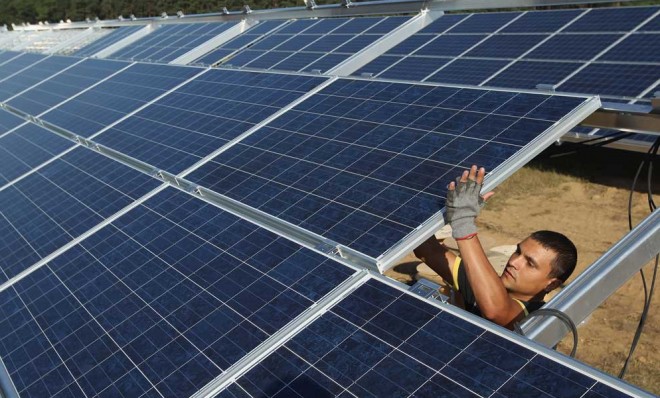The 3 biggest obstacles to a solar energy boom
The cost of solar energy is plummeting. But it's still way more expensive than coal and natural gas

Optimism surrounding a solar energy boom seems to be hitting new highs: Game-changing technologies seem to hit the market nearly every week, and new government policies, like a series of solar mandates in Japan, has people and businesses all over the world installing solar panels at record rates.
Nonetheless, several challenges stand between us and a true solar revolution. Here are three:
Cost
The Week
Escape your echo chamber. Get the facts behind the news, plus analysis from multiple perspectives.

Sign up for The Week's Free Newsletters
From our morning news briefing to a weekly Good News Newsletter, get the best of The Week delivered directly to your inbox.
From our morning news briefing to a weekly Good News Newsletter, get the best of The Week delivered directly to your inbox.
The cost of solar is down to just 10 percent of what it was five years ago. But for solar to be viable without government subsidies (like the ones driving Japan's solar boom), the price per megawatt-hour will have to keep sinking. Solar still costs $156.90 per megawatt-hour, more expensive than coal at $99.60 per megawatt-hour, and natural gas at $65.50 to $132 per megawatt-hour, according to the U.S. Department of Energy.
Materials like cadmium telluride, a crystalline compound used to make thin film solar cells, have helped drive down the price. These thin film cells can be manufactured much more quickly and inexpensively than silicon-based technologies, and they collect more energy, reaching 18.7 percent efficiency — well above current commercial CdTe modules, which reach between 10 percent and 13.1 percent efficiency.
Infrastructure
Integrating new solar energy into existing energy grids poses many challenges, says a recent study in the Journal of Renewable and Sustainable Energy. Our current generators allow utility plants to balance the amount of energy generated with the amount used. But with solar cells, the amount of energy generated is sensitive to environmental changes, like the passing of a cloud, which can reduce electrical output by 50 percent within just a few seconds, says Inside Science. Fixing this problem could prove expensive:
A free daily email with the biggest news stories of the day – and the best features from TheWeek.com
To compensate for solar power fluctuations, engineers currently incorporate fast but relatively expensive generators that perform frequency regulation services. These generators inject extra power into networks when fluctuations in PV output cause the generated electricity to dip below the desired frequency of 60 Hertz.
The use of solar power cannot be increased without also increasing existing frequency regulation services, [Mohamed ElNozahy, an electrical and computer engineer at Canada's University of Waterloo] said. "This will increase the cost of solar electricity, which is already much higher than other sources," he said.
Some experts predict that without increasing the number of frequency regulation generators in use, solar power won't be able to supply more than 5 percent of our current power demands. [Inside Science]
Night
The hours when demand for energy is at its highest are the same hours the sun is nowhere to be found. Scientists have devoted a lot of effort to figuring out how to store solar energy to use at night. One option is solar batteries, which are effective, but can cost as much as $6,500 per household (underscoring the first challenge on this list).
Another system, currently the most common, uses thermal power plants to store heat in molten salt, oil, or beds of packed rocks at scorched temperatures to be used later.
A new method developed by the University of Arkansas uses "a structured thermocline system in which there are parallel plates of concrete with steel pipes running through them," says Clean Technica. "The steel pipes transfer heat absorbed by solar panels into the concrete, which stores it until it is needed to boil water and produce steam (which is usually the case), or supply heat to other heat-powered generators such as Stirling engines or thermoelectric modules."
Carmel Lobello is the business editor at TheWeek.com. Previously, she was an editor at DeathandTaxesMag.com.
-
 7 bars with comforting cocktails and great hospitality
7 bars with comforting cocktails and great hospitalitythe week recommends Winter is a fine time for going out and drinking up
-
 7 recipes that meet you wherever you are during winter
7 recipes that meet you wherever you are during winterthe week recommends Low-key January and decadent holiday eating are all accounted for
-
 Nine best TV shows of the year
Nine best TV shows of the yearThe Week Recommends From Adolescence to Amandaland